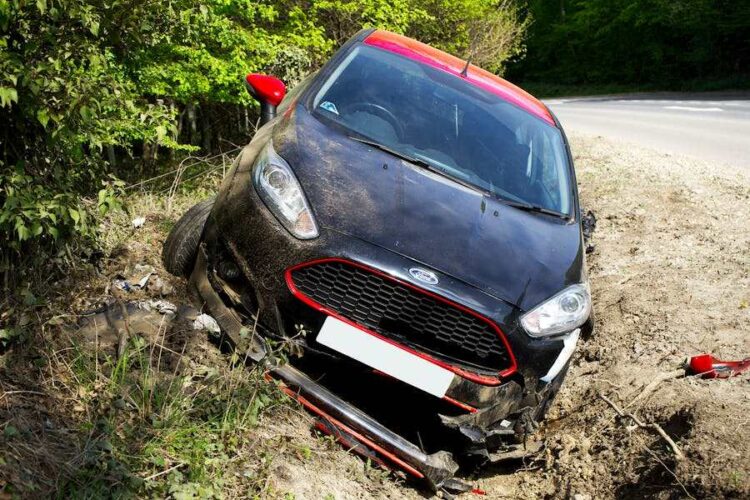In the blink of an eye, a routine drive can be transformed into the chaotic scene of an accident. Adrenaline surges through your body, leaving you disoriented, shaky, and struggling to grasp the situation. In the midst of this sensory overload, staying calm and taking decisive action is paramount. The immediate aftermath of a car crash is a critical window where your actions can significantly impact your safety, the well-being of others involved, and the legal and financial repercussions that may follow.
First assess the situation and ensure the safety of yourself and everyone else involved. If the accident appears minor and there are no immediate dangers like leaking fluids or flames, check yourself and your passengers for injuries. Look for any visible signs of trauma such as cuts, bruises, swelling, or signs of dizziness. Even if everyone seems alright initially, it’s important to remember that some injuries, like whiplash, might not manifest immediate symptoms. Whiplash is a soft tissue injury to the neck that can cause pain, stiffness, and headaches, and it can take days or even weeks for the full extent of injury to become apparent. To avoid any complications down the road, get checked out by a medical professional as soon as possible after the accident, even if you feel fine. Explain to the doctor that you were involved in a car accident and describe any symptoms you are experiencing, no matter how minor they seem.
Securing The Scene Of The Accident
Securing the scene of the accident can help prevent further collisions and protect yourself and others from additional hazards. This not only minimizes the risk of further injuries, but also ensures a safe environment for the arrival of emergency responders.
After checking on everyone’s safety, activate your hazard lights. These flashing amber lights are the universal signal for a disabled vehicle on the road, and they will immediately alert approaching drivers to the accident scene. This gives them ample time to slow down or change lanes to avoid a collision with your car or any debris from the accident.
If your car is still drivable and the accident occurred on a busy road or highway, the next step is to carefully move it to a safe location off the road. Try to find a shoulder with enough space for your car to be entirely out of traffic flow. Don’t attempt to move your car if it’s too damaged, if it could cause further damage to the road or other vehicles, or if doing so puts yourself or others at risk. For example, if the accident left your car leaking fluids or rendered the steering unresponsive, leave it where it is.
In these circumstances, you’ll need to rely on your hazard lights and any warning devices you have available to alert oncoming traffic. If you have flares or warning triangles in your car, set them up a safe distance behind your car. Be mindful of traffic flow and place them where they won’t be a fire hazard or get hit by passing vehicles.
Once you’ve secured your vehicle and used any available warning devices, move yourself and any passengers to a safe location away from traffic. This means getting out of the flow of traffic entirely, ideally to the side of the road opposite oncoming traffic. By following these steps and prioritizing safety, you can significantly reduce the risk of further accidents and ensure a safe environment for everyone involved until help arrives.
Contacting The Authorities
Once the scene is secure and everyone is safe, contact the authorities. Call 911 immediately if there are any injuries, significant property damage, or if the other driver is behaving erratically or appears intoxicated. Even in a seemingly minor fender-bender, having a police report filed can be used for insurance purposes later on. The police will document the scene, interview everyone involved, and prepare an accident report that will be a vital document for your insurance company. When calling 911, stay calm and provide the dispatcher with a clear and concise description of the accident, your location, and the number of people involved.
Documenting The Accident
While waiting for the police to arrive, take a moment to document the accident scene by taking photos. Capture various angles of the damage to all vehicles involved, any skid marks on the road, traffic signals or signs that might be relevant, and any injuries you or your passengers may have sustained. If there are any witnesses to the accident, gather their contact information as well. Their statements can be valuable if there are any discrepancies about how the accident occurred.
Exchanging Information With The Other Driver(S) Involved
Once the police arrive and have taken their statements, exchange contact and insurance information with all other drivers involved in the accident. This includes names, phone numbers, driver’s license numbers, license plate numbers, and insurance company names and policy numbers. Be polite and factual in your interactions with the other driver(s). Avoid admitting fault or discussing the specifics of the accident beyond a brief description of what happened from your perspective. Anything you say at the scene of the accident could be used against you later, so it’s best to stick to the facts and avoid speculation or emotional outbursts.
Contacting Your Insurance Company
As soon as possible after the accident, report the accident to your insurance company. They will advise you of the next steps and guide you through the claims process. Be truthful and accurate when providing details about the accident, but avoid speculating or offering opinions on who might be at fault.
Seeking Legal Advice
If the accident resulted in significant injuries, extensive car damage, or a dispute over fault, consult with a car accident lawyer. An experienced attorney can advise you of your rights, represent you in any legal proceedings, and help you navigate the insurance claim process. Even a seemingly minor accident can have long-term consequences, so don’t hesitate to seek legal counsel.
Taking Care Of Yourself After The Accident
The aftermath of a car accident can be a stressful and emotional experience. In addition to any physical injuries you may have sustained, you might also be dealing with shock, anxiety, or post-traumatic stress disorder (PTSD). It’s important to take care of yourself both physically and mentally following a car accident. Here are some tips for coping:
- Seek Medical Attention: Even if you feel uninjured, get evaluated by a doctor as soon as possible. Some injuries, like whiplash, may not manifest symptoms immediately.
- Allow Yourself Time to Heal: Healing from an accident takes time, both physically and emotionally. Be patient with yourself and don’t try to do too much too soon.
- Talk to Someone You Trust: Talking to a friend, family member, therapist, or counselor can help you process your emotions and cope with the stress of the accident.
- Take Care of Yourself: Make sure you are getting enough sleep, eating healthy foods, and exercising regularly. Taking care of your physical health will also help to improve your mental well-being.
By following these steps, you can take control of the situation after a car crash and ensure your safety, protect your rights, and begin the road to recovery.










